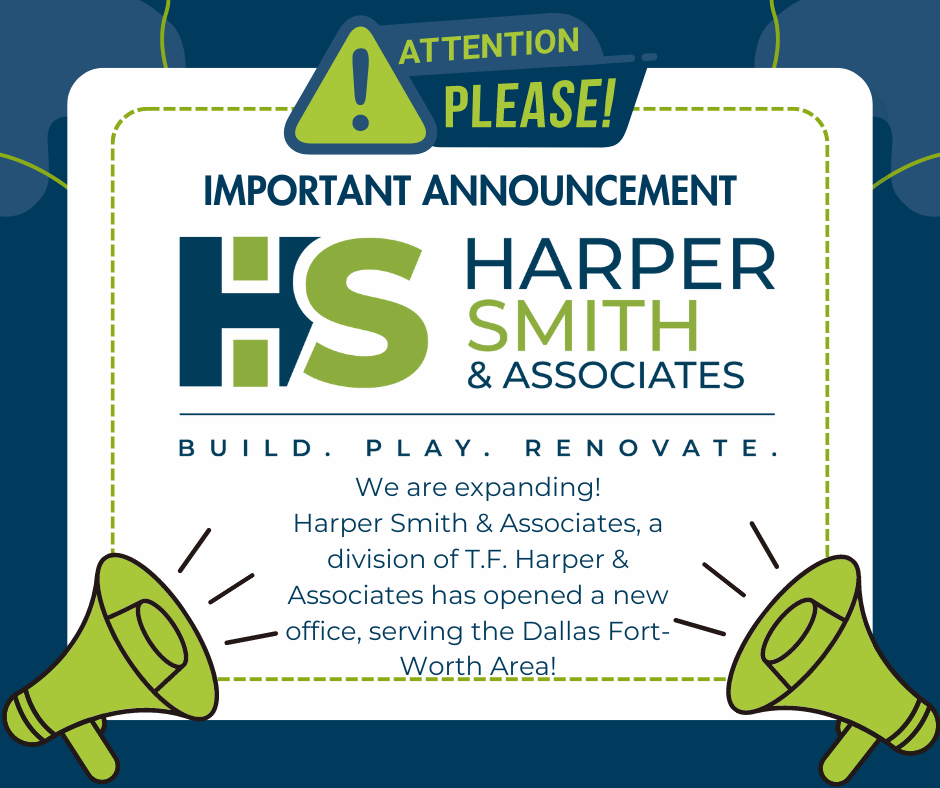Construction costs in Austin, Texas are on the rise, posing challenges for developers and investors. As one of the fastest-growing cities in the U.S., Austin’s construction landscape is advancing rapidly, with various factors contributing to the escalating costs. Understanding these cost drivers is critical for stakeholders to steer the complexities of construction projects effectively.
Below, we’ll dive into the factors shaping construction costs in Austin, shedding light on strategies to control expenses and mitigate financial risks in commercial building endeavors.
Factors Influencing Construction Costs in Austin
Construction costs are heavily impacted by two primary factors: labor costs and material costs. The city’s booming tech industry and population growth have increased demand for skilled labor, pushing wages higher than in many other Texas markets. This competition for qualified workers means you will likely face premium labor rates compared to less saturated regions.
Material prices also contribute significantly to construction expenses. Supply chain disruptions and rising commodity prices have driven up the cost of steel, concrete, lumber, and other essential building materials. For example, fluctuations in lumber prices alone can add thousands of dollars to a mid-size commercial project.
A typical breakdown of major cost components includes:
- Labor: 18%–35% of total costs
- Materials:5%–25%
- Foundations: Approximately 11.5%
- Finishes: Can reach up to 30%, depending on design complexity
Additional expenses such as design fees (ranging from 1% to 15%) and major systems installation (around 12.5% of construction costs) must be factored into your budget. These systems include HVAC, electrical, plumbing, and fire protection—all crucial for compliance with local codes and tenant requirements.
Types of Commercial Buildings and Their Cost Implications
The costs can vary significantly depending on the type of building being constructed. Here are some key cost implications for different types of commercial buildings:
1. Office Buildings:
- Single-story Office: Cost ranges between $305-$445 per square foot.
- Mid-rise Office: Cost ranges between $355-$880 per square foot.
- High-rise Office: Cost ranges between $460-$1045 per square foot.
2. Hotel Buildings:
- Three-Star Hotel: Cost ranges between $500-$640 per square foot.
- Five-Star Hotel: Cost ranges between $690-$915 per square foot.
3. Healthcare Facilities:
- Acute Care Facilities: Cost ranges between $1035-$1285 per square foot.
- Medical Office Buildings: Cost ranges between $460-$1050 per square foot.
- Specialty Clinics: Cost ranges between $625-$790 per square foot.
Each type of commercial building comes with its unique cost implications based on factors such as design complexity, materials used, and specialized systems required.
Strategies to Control and Reduce Construction Costs
Managing construction expenses requires intentional budgeting and a focus on cost-effective solutions. Start by developing a detailed budget that anticipates all phases of the project, including hard costs like materials and labor, as well as soft costs such as permits, design fees, and contingency funds for unexpected expenses. A realistic budget creates a foundation for better financial control throughout the build.
1. Implement Value Engineering
Value engineering stands out as a critical tactic. It involves reviewing project specifications to identify alternatives that maintain quality while lowering costs. For example:
- Substituting expensive finishes with durable yet affordable materials
- Simplifying design elements to reduce labor hours
- Optimizing structural components without compromising safety
2. Consider Green Building Materials
Green building materials present another opportunity to reduce long-term expenses despite potentially higher upfront costs. Incorporating energy-efficient systems and sustainable materials can qualify projects for tax incentives and lower operational costs. Examples include:
- Using recycled steel or sustainably sourced wood
- Installing high-efficiency HVAC units
- Implementing advanced insulation techniques
3. Seek Expert Guidance
Engaging construction experts familiar with Texas regulations, local suppliers, and labor markets enhances decision-making. Their insight into regional cost drivers allows you to avoid common pitfalls that inflate budgets unnecessarily. Early collaboration with architects, contractors, and project managers supports proactive cost management rather than reactive problem-solving.
Effective cost control combines thorough budgeting, smart material selection, value engineering, and expert guidance tailored to our unique construction environment.
Hidden Costs and Unexpected Expenses in Commercial Projects
Commercial building projects can often have hidden costs that may not be immediately apparent during the planning phase. These costs can significantly impact the overall budget and timeline of the project if not properly accounted for. Here are some common hidden costs that can affect commercial construction projects:
1. Permit Delays
Obtaining the necessary permits for a commercial construction project can sometimes take longer than expected. This delay can be caused by various factors such as bureaucratic processes, incomplete documentation, or additional requirements imposed by local authorities. When permits are delayed, it can lead to project setbacks and increased costs due to extended labor and equipment rental expenses.
2. Material Price Fluctuations
The prices of construction materials such as steel, concrete, and lumber can fluctuate due to market conditions, supply chain disruptions, or other economic factors. If these price increases occur after the project has already been budgeted, it can result in unexpected expenses that may strain the project’s financial resources.
3. Weather Delays
Texas is known for its unpredictable weather patterns, which can pose challenges to construction schedules. Heavy rainstorms, extreme heatwaves, or severe storms can halt work on-site and cause delays in project completion. These weather-related delays may require additional resources or overtime work to make up for lost time, leading to increased costs.
Ways to Mitigate Unexpected Expenses
While it’s difficult to completely eliminate hidden costs and unexpected expenses in commercial projects, there are steps you can take to mitigate their impact:
- Thoroughly research permit requirements: Before starting your project, make sure you have a clear understanding of the permits needed and the timeline involved in obtaining them. This will help you plan accordingly and avoid any surprises.
- Negotiate contracts with suppliers: When sourcing materials for your construction project, try negotiating contracts with suppliers that include fixed prices or price caps. This way, even if material prices fluctuate during the course of the project, you won’t be directly affected.
- Build buffer time into your schedule: Anticipate potential weather delays by building buffer time into your construction schedule. This will give you some flexibility to accommodate any unforeseen circumstances without causing significant disruptions to the overall timeline.
By being aware of these hidden costs and implementing strategies to mitigate them, you can better manage your commercial building project’s budget and safeguard its successful completion.
Navigating Austin’s Growing Commercial Construction Landscape
Managing construction costs effectively is vital for the success of commercial building projects in Austin. Understanding the key cost drivers and implementing strategies to control expenses is fundamental to project success.
Seek professional assistance from T.F. Harper to ensure accurate budgeting, cost estimation, and effective cost control measures. Our guidance can help navigate the complexities of construction projects and optimize costs for better project outcomes.
Frequently Asked Questions About Commercial Construction Costs
What are the main factors driving construction costs up in Austin?
The primary factors influencing rising construction costs in Austin include increased labor costs, higher material prices, design fees, and expenses related to major building systems.
How do construction costs vary among different types of commercial buildings?
Construction costs differ significantly based on the type of commercial building. Office buildings, hotels, and healthcare facilities each have unique cost ranges due to varying design requirements, materials, and systems. Detailed cost breakdowns help in estimating budgets accurately for each building type.
What strategies can be employed to control and reduce construction costs in Austin projects?
Effective strategies to manage and lower construction expenses include thorough budgeting, value engineering to optimize design and materials, and incorporating green building materials. Strategic planning combined with expert guidance ensures better cost control throughout the project lifecycle.
What are some common hidden costs and unexpected expenses in commercial construction projects in Austin?
Hidden costs often arise from permit delays, fluctuations in material prices, and weather-related delays. These unexpected expenses can significantly impact the overall budget. Proactive mitigation strategies such as contingency planning and regular market monitoring can help manage these risks.
Why is it important to understand cost drivers when undertaking a construction project?
Understanding cost drivers allows project stakeholders to anticipate potential price increases, allocate budgets effectively, and make informed decisions during design and procurement. This knowledge helps prevent budget overruns and ensures successful project delivery.
How can professional assistance improve budgeting and cost control for construction projects?
Engaging with experienced professionals provides access to expert insights on local market trends, regulatory requirements, and efficient construction practices. Their guidance aids in accurate budgeting, identifying cost-saving opportunities, and implementing effective cost control measures tailored to Austin’s unique construction environment.











